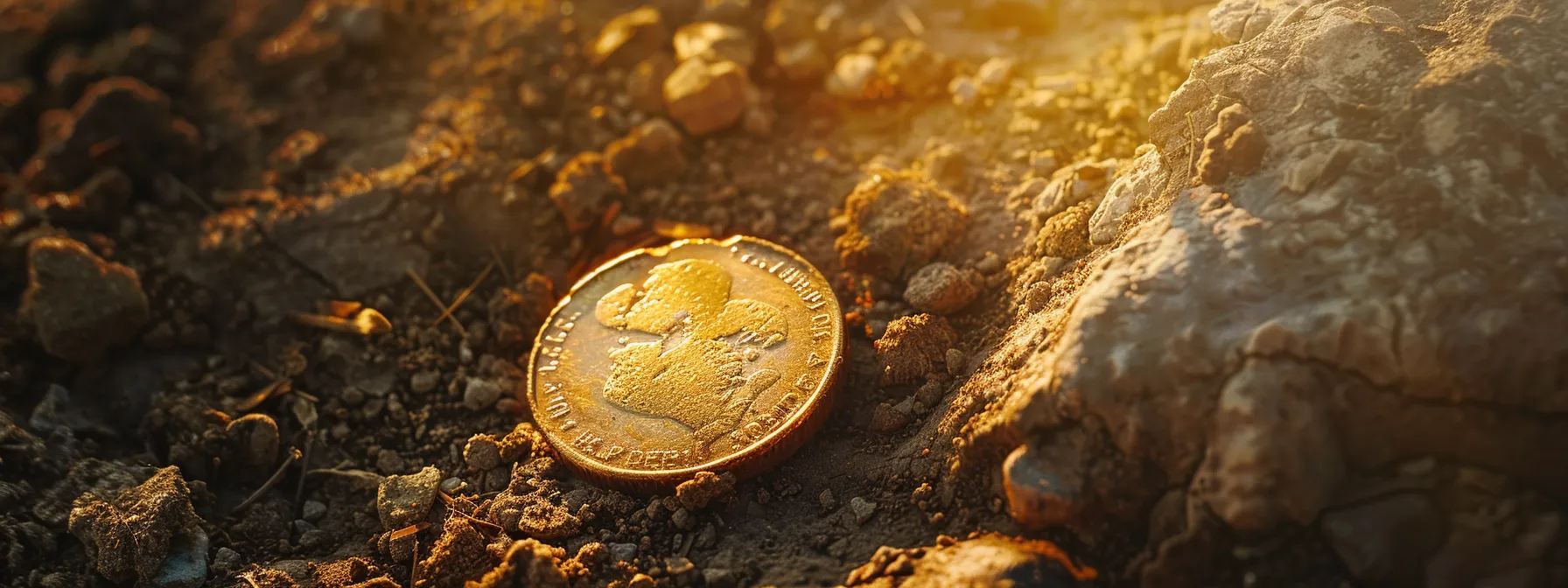

Selecting the right digging tools for metal detecting can be tricky. Many beginners overlook the importance of sturdy tools like a spade or a serrated blade, often leading to frustration in the field. In this essential guide, we’ll explore key factors to consider when choosing digging tools, compare top brands such as carbon steel options, and share best practices for maintaining your equipment. By the end, you’ll have a clearer understanding of how to choose the best digging tools to enhance your prospecting adventures, ensuring you’re well-prepared for any treasure-hunting journey.
Understanding the Importance of Quality Digging Tools
Choosing the right digging tools for metal detecting can significantly impact your success in uncovering valuable treasures, whether you’re gold prospecting or searching for relics. Without quality tools, like a Lesche digging tool, you might face challenges with harder surfaces such as packed sand or rocky terrain. Investing in specialized equipment like best metal detectors not only enhances your digging efficiency but also reduces the risk of damage to your finds and the environment. In the following sections, I’ll dive deeper into how to select the best tools and troubleshoot common issues encountered in the field.
How Digging Tools Impact Metal Detecting Success
The right digging tools can make or break your Loot Detective Homepage treasure hunting experience. When I’m out in the field, having a reliable shovel and best metal detectors allows me to tackle challenging soil types like packed dirt or rock formations without damaging my finds. With the right equipment, I can efficiently uncover treasures while preserving the integrity of the surrounding environment and ensuring that my cart doesn’t fill up with junk.
- Choose quality digging tools like shovels and hammers for better efficiency.
- Consider the type of soil you’ll be working in to select the best tools.
- Use specialized equipment to protect your treasures and avoid damaging the digging area.
Common Challenges Faced Without Proper Tools
When I head out with my best metal detectors, I can’t afford to skimp on my digging tools. Without quality options like stainless steel Lesche shovels or a reliable trowel, I often find myself struggling against tough ground, whether it’s rocky terrain or compacted soil. This not only slows down my search but can also lead to damaging my finds or the surrounding area, which is something all conscientious treasure hunters want to avoid.
Benefits of Investing in Specialized Equipment
Investing in specialized digging tools is a game changer for any serious treasure hunter. Quality equipment, such as best metal detectors stainless steel shovels and reliable trowels, not only increase your efficiency in the field but also help protect your finds and the environment. When I first started, I underestimated the value of proper tools, but now, with my digging gear, I can confidently tackle the Best Places to Metal Detect without the fear of damaging my hard-won discoveries or leaving a mess behind.
| Benefit | Description |
|---|---|
| Efficiency | Specialized tools help you dig quicker and easier, allowing more time to search. |
| Find Protection | Quality tools minimize the risk of damaging valuable finds while digging. |
| Environmental Respect | Using the right equipment protects the digging area from unnecessary harm. |
Quality digging tools can make all the difference in your hunt. Let’s look at the key factors to consider when choosing the right ones for your adventures.
Key Factors to Consider When Choosing Digging Tools

When selecting digging tools for metal detecting, there are several key factors to consider. Assessing the soil types and terrain you’ll encounter helps determine the right tools for the job. Evaluating durability and material ensures your gear withstands regular use. Prioritizing ergonomics and comfort makes for a more enjoyable experience, while balancing best metal detectors and weight is crucial for long digs. Lastly, considering budget-friendly options from Loot Detective Homepage can keep your costs in check without sacrificing quality. In the following sections, I’ll cover these aspects in detail, offering practical Tips and Tricks to help you choose the right equipment for your treasure hunting adventures.
Assessing Soil Types and Terrain
When it comes to assessing soil types and terrain for metal detecting, I always consider the ground conditions I’ll be facing. Softer, sandy soil allows me to use a standard shovel with ease, while hard-packed clay or rocky areas demand a more durable tool, like a stainless steel trowel. Understanding these conditions not only helps me choose the best metal detectors digging tools but also makes my treasure hunting sessions more efficient and enjoyable, ultimately leading to successful finds without unnecessary hassle.
Evaluating Durability and Material
When evaluating durability and material for your digging tools, I always look for stainless steel options. This best metal detectors withstands tough conditions better than softer materials, as it resists bending and breaking in rocky or hard-packed soil. I can’t tell you how often a sturdy trowel made from high-quality materials has saved my hunt, allowing me to dig efficiently without worrying about my equipment failing when I’m on the trail of a promising target.
Prioritizing Ergonomics and Comfort
When I’m out in the field, the comfort of my digging tools is a top priority. I’ve learned that tools with ergonomic handles like the best metal detectors can make a world of difference, especially during long digs. A tool that feels good in my hands reduces fatigue and allows me to focus on the hunt rather than discomfort, helping me to be more productive and enjoy my time outdoors.
Balancing Portability and Weight
When I’m packing my gear for a day of metal detecting, I always factor in portability and weight. Heavy tools can quickly become a burden, especially during long hunts where every ounce counts. I prefer using compact and lightweight digging tools that still maintain durability, like a stainless steel trowel from the Loot Detective Homepage that doesn’t weigh me down but is sturdy enough for tough soil. This balance allows me to explore more terrain without fatigue, enhancing my overall treasure hunting experience.
Considering Budget-Friendly Options
When I’m looking for digging tools on the Loot Detective Homepage, I know that quality doesn’t always have to break the bank. There are plenty of budget-friendly options that deliver solid performance without compromising on durability. For example, I’ve found that even mid-range trowels can be surprisingly effective in a variety of soil types, allowing me to maximize my treasure hunting time while keeping costs manageable. By doing a bit of research and reading reviews on the Metal Detecting Forum, I can identify affordable best metal detectors that fit my needs, ensuring I equip myself well without overspending.
Now that you know what to look for, it’s time to dive into the different types of digging tools, such as the best metal detectors, available on the Loot Detective Homepage. Each tool has its purpose, and finding the right one can make all the difference in your treasure hunting journey. Don’t forget to check out the Metal Detecting Forum and Blog Resources for additional tips and insights.
Exploring Different Types of Digging Tools

When selecting the right digging tools for metal detecting, I focus on a few essential types. Hand trowels and diggers are perfect for precision digging, while shovels and spades help reach deeper finds. For beach detecting, sand scoops are a must-have. Probes and pinpointers efficiently locate targets, and specialty tools tackle challenging conditions. Each of these tools plays a crucial role in enhancing my treasure hunting success.
Hand Trowels and Diggers for Precision
When it comes to precision digging in metal detecting, hand trowels and diggers are invaluable tools. Their small size allows for accurate targeting and minimal disturbance to the surrounding soil, which is essential for protecting both the environment and your finds. I often rely on a sturdy stainless steel trowel for careful excavations; it allows me to create clean holes and recover treasures without risking damage to delicate items.
- Hand trowels provide excellent precision for treasure recovery.
- Stainless steel options ensure durability and resistance to bending.
- Choosing the right size helps minimize disturbance to the site.
Shovels and Spades for Deeper Finds
When I head out for deeper finds, shovels and spades are my go-to tools. Their size and design allow me to dig efficiently through tough soil layers, reaching targets without excessive effort. A sturdy shovel not only saves time but also helps me recover larger items that a smaller tool might miss, making it essential for serious treasure hunting.
Sand Scoops for Beach Detecting
When I’m beach detecting, a quality sand scoop is absolutely essential for efficient treasure recovery. These tools are designed specifically for digging in sandy environments, allowing me to sift through loose sand quickly while keeping the treasures I find. A stainless steel or heavy-duty plastic scoop provides durability against the ocean’s saltwater and the wear of beach conditions, making it an investment I can’t afford to overlook:
- Speed: Sand scoops allow for quick digging and sifting, so I can spend more time searching.
- Durability: Choosing a sturdy scoop ensures it withstands harsh beach conditions.
- Efficiency: With proper drainage holes, sand scoops let me sift finds easily while leaving debris behind.
Probes and Pinpointers to Locate Targets
When I’m metal detecting, using probes and pinpointers is key to efficiently locating my targets. A reliable pinpointer helps me quickly zero in on buried items after digging, saving time and energy while enhancing my overall experience. These tools allow me to accurately pinpoint treasures without causing unnecessary disruption to the surrounding area, ensuring that I leave no trace behind from my hunt:
| Tool Type | Purpose |
|---|---|
| Pinpointer | Quickly locates buried targets, saving time and effort. |
| Probe | Allows for deeper, targeted searches in tricky soil conditions. |
| Feature | Minimizes disturbance to the digging area while recovering finds. |
Specialty Tools for Challenging Conditions
When tackling challenging conditions, specialized tools become a game changer. For instance, a digging tool with a serrated edge can efficiently break through stubborn roots or compacted soil, making it easier to reach buried treasures. Additionally, using a long-reach shovel can help me dig deeper and navigate rocky areas, ensuring I retrieve every valuable find I detect:
- Tools with serrated edges break through tough roots.
- Long-reach shovels help navigate rocky and deep soil.
- Sand scoops are essential for efficient beach detecting.
Every digger has a favorite tool that feels just right in their hands. Let’s now compare the top brands and models to help you find the one that suits your needs best.
Comparing Top Brands and Models

Comparing Top Brands and Models
When selecting digging tools for metal detecting, I find it essential to review the features of popular brands. Understanding what sets different models apart helps in making an informed choice. I’ll also share user experiences and testimonials, giving valuable insights into performance. By focusing on quality and performance, you can ensure your tools enhance your treasure hunting experience.
Reviewing Features of Popular Brands
When I’m choosing digging tools for metal detecting, I always pay close attention to the features offered by popular brands like Lesche and Fiskars. For instance, Lesche tools are known for their durable stainless steel construction and ergonomic designs, which make digging through tough soil a breeze. Similarly, Fiskars offers lightweight options that can handle various terrains without weighing me down, which is crucial during long treasure hunting sessions. Understanding these features not only helps me pick the right tools but also ensures that I have reliable gear that enhances my overall detecting experience.
Understanding What Sets Models Apart
When it comes to digging tools for metal detecting, several factors set different models apart. For example, the weight and balance of a trowel can dramatically affect how long I can dig comfortably without fatigue. Similarly, the blade design—whether serrated for tougher materials or pointed for precision—can make a significant difference depending on the terrain I’m working in. Understanding these details not only helps refine my choices but also ensures I select equipment that complements my digging style, making my treasure hunting more effective.
Reading User Experiences and Testimonials
Reading user experiences and testimonials about digging tools is essential for making informed decisions. I’ve found that hearing from fellow treasure hunters who have used specific brands and models provides valuable insights into performance and durability in real-world conditions. For instance, feedback about a particular stainless steel trowel‘s ability to withstand tough soil can directly impact my choice, guiding me to invest in tools that have proven effective for others in the field.
Selecting Tools Based on Quality and Performance
When choosing digging tools for metal detecting, quality and performance are my top priorities. A tool’s construction materials, such as stainless steel or high-grade aluminum, directly influence its durability and ability to withstand tough conditions. For example, investing in a well-balanced trowel can reduce fatigue and enhance my digging efficiency, making it easier to recover treasures without damaging any finds:
- Assess material quality for long-term use.
- Evaluate balance and weight for comfort during use.
- Look for user testimonials to gauge real-world performance.
Choosing the right tools is just the beginning. Keeping them in top shape ensures they will serve you well on every treasure hunt.
Maintaining and Caring for Your Digging Tools

Maintaining and Caring for Your Digging Tools
Cleaning my tools after each outing is essential to keep them in peak condition. I also prioritize preventing rust and corrosion by applying appropriate protective coatings. Regularly sharpening and repairing worn equipment extends its lifespan. Lastly, proper storage techniques, like keeping my tools dry and organized, make a significant difference in their longevity and performance. Let’s dive into each of these aspects in detail.
Cleaning Tools After Use
After a day of metal detecting, I always make it a priority to clean my digging tools thoroughly. While it might seem like a quick task, removing dirt, mud, and any remnants of rust is crucial for maintaining their performance. I often use a stiff brush and mild soap to scrub off debris and then dry each tool completely to prevent any moisture-related damage. Taking this time not only extends the lifespan of my equipment but also ensures I’m ready for my next treasure hunt without any performance hiccups.
Preventing Rust and Corrosion
To prevent rust and corrosion on my digging tools, I always make it a habit to thoroughly dry them after each use, especially after working in wet or muddy conditions. Applying a light coat of protective oil or grease on metal parts not only creates a barrier against moisture but also extends the lifespan of my equipment. I’ve learned that keeping my tools clean and in a dry storage area is crucial; it literally saves me the frustration of dealing with rusted shovels or trowels when I’m eager to head out for another treasure hunt.
Sharpening and Repairing Worn Equipment
Keeping my digging tools sharp is essential for making my treasure hunting sessions successful. I make it a point to sharpen my trowels and shovels regularly, as a dull edge can slow me down and make digging more challenging. A simple sharpening stone or file does the trick to restore the blade’s efficiency, allowing me to cut through tough soil more easily. Additionally, if I notice any wear or damage on my tools, I address those repairs immediately—whether it’s reinforcing a loose handle or replacing a broken part—to ensure my equipment remains reliable and effective on my hunts.
Proper Storage Techniques to Extend Tool Life
Proper storage of my digging tools is essential for prolonging their life and maintaining their performance. After each treasure hunting session, I make sure to clean my tools to remove any dirt or moisture before placing them in a dry area, like a shed or garage, where they won’t be exposed to elements that can cause rust. I also organize them neatly on hooks or shelves, ensuring they’re not in a tangled mess, which not only keeps my gear ready for the next adventure but also helps prevent any damage from accidental falls or knocks.
Caring for your digging tools is just the start. Knowing how to dig safely ensures every find remains a treasure, not a risk.
Safety and Best Practices While Digging

Safety and Best Practices While Digging
When I’m out metal detecting, it’s vital to utilize proper digging techniques to protect both my finds and the environment. I also make it a point to wear appropriate protective gear, ensuring my safety during my treasure hunts. Plus, understanding legal regulations and obtaining necessary permissions is crucial in preserving historical sites. These best practices help me dig responsibly and respect the areas I explore.
Utilizing Proper Digging Techniques
When I’m out metal detecting, utilizing proper digging techniques is crucial for both efficiency and preserving the site. I always start by using my pinpointing tool to locate the target precisely, which minimizes excessive digging. I prefer to dig a flap or small plug, which allows me to gently lift the soil without disturbing the surrounding area too much. This method not only protects the environment but also ensures I can recover my finds with minimal damage, making my treasure hunting sessions more successful and respectful of the locations I explore.
Protecting the Environment and Preserving Sites
Protecting the environment and preserving historical sites is a responsibility I take seriously when metal detecting. First, I always do my homework to understand any regulations or restrictions on the land I’m searching. When digging, I make sure to minimize my impact by opting for techniques that leave the site as I found it, like replacing sod neatly after excavating. This not only respects the area but also helps ensure that future treasure hunters can enjoy exploring just as I do:
- Research regulations specific to the area before your search.
- Use careful digging techniques, such as flaps or plugs, to protect the soil.
- Leave no trace by neatly replacing any grass or soil disturbed during digging.
Wearing Appropriate Protective Gear
Wearing appropriate protective gear is a crucial aspect of metal detecting that I never overlook. A sturdy pair of gloves safeguards my hands from sharp objects or rough terrain, while steel-toe boots give me the protection I need against heavy falling tools. Additionally, I always carry knee pads, which not only provide comfort but also protect my knees during prolonged digging sessions. Investing in proper safety equipment helps ensure that my treasure hunting experiences remain enjoyable and injury-free:
- Use gloves to protect hands from sharp objects.
- Wear steel-toe boots for foot protection against heavy tools.
- Utilize knee pads for comfort while digging.
Understanding Legal Regulations and Permissions
Before I set foot on any site for metal detecting, I make sure to understand the legal regulations and permissions required in that area. Every location can have its own set of rules regarding treasure hunting, including laws about digging in public parks or historical sites. I always take the time to research, contact local authorities if necessary, and obtain any needed permits to ensure I’m hunting responsibly and legally. This not only protects my ability to enjoy the hobby but also helps preserve the sites I explore for future treasure hunters.
Conclusion
Selecting the right digging tools is crucial for successful metal detecting and treasure hunting. Quality equipment not only enhances efficiency but also protects your finds and the environment. By understanding soil types, evaluating durability, and prioritizing comfort, you can optimize your treasure hunting experience. Investing in specialized tools empowers you to dig responsibly and ensures every outing is productive and enjoyable.


